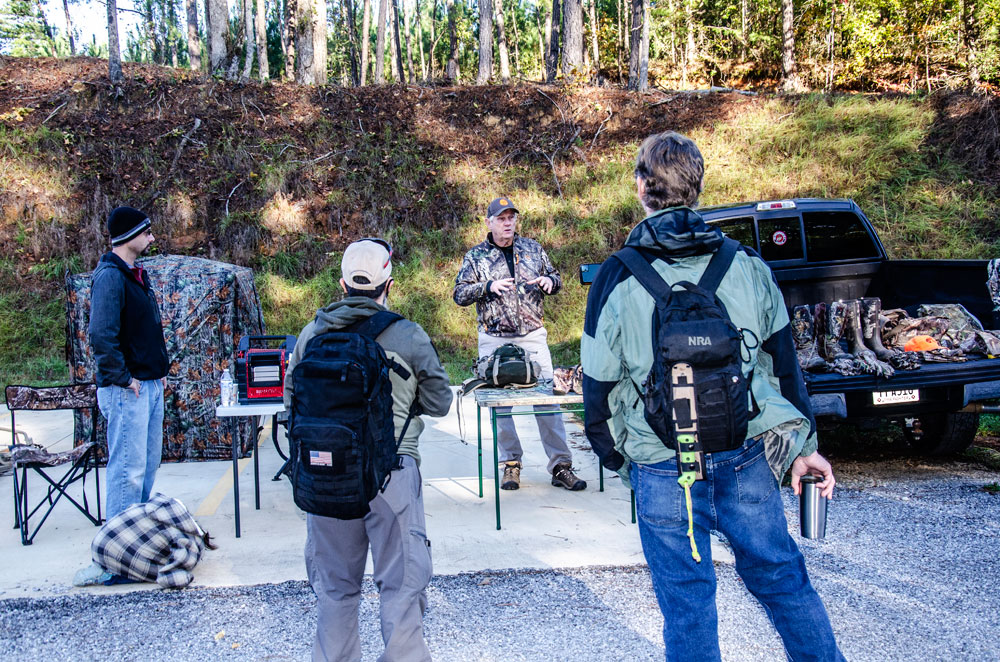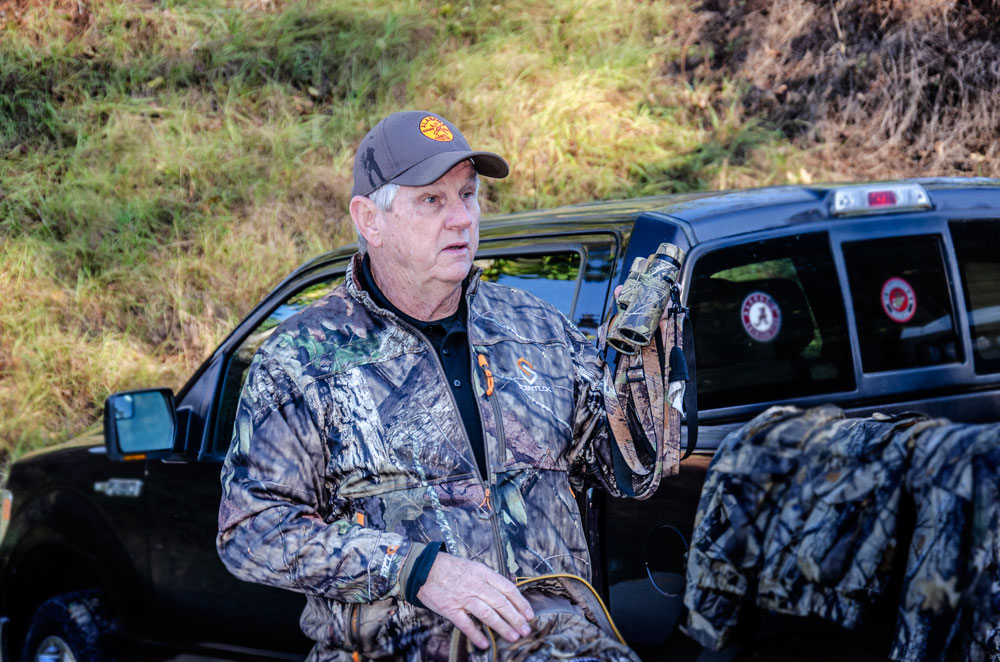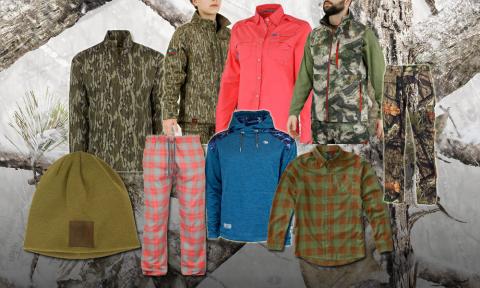provided by John Phillips
Scott Carroll is a nationally registered paramedic and has an associate of science in emergency medical services. Currently he’s a clinical and educational specialist in north Alabama for Lifeguard Ambulance Services and a cath lab technologist (scrub tech) for the University of Alabama at Birmingham. He took this course because he wanted to implement the knowledge he had in his head about hunting and then put that head knowledge into actually hunting on the ground.

I wanted to apply everything I’d been teaching myself over many years of trying to learn how to hunt. I was told about the program by an older gentleman - Mr. Mike Jay of Talladega, Alabama, who was the father of one of my EMT students. Mr. Jay took me hunting on one of Alabama’s Wildlife Management Areas - Choccolocco. On that first hunt, with Mr. Jay, I had a 4-point buck walk out right in front of me. I didn’t even hear him moving, but when I saw him, I was scared and excited at the same time. While watching the buck, I heard a shot a mile or more away from me. As soon as that buck heard the shot, he wheeled and ran away from me. I thought how neat our finding a place in the woods where we could see a white-tailed buck was.
Mr. Jay told me later after that first hunt, “Scott, you need to get with the people doing that outdoor mentoring program for the State of Alabama. I don’t know much about it, but I just know it exists.”
So, I went to the Outdoor Alabama website, clicked on the Hunting Tab and then chose the Adult Mentored Hunt Program and learned all I could about the program. I went to the first workshop on how to hunt white-tailed deer on public lands in 2001, and in 2002, I became an instructor. Last year (2019) at the program I attended, I called Justin Grider, who was in charge of the program, and told him that everything I’d learned before about how to hunt white-tailed deer had applied to my hunting. I also mentioned I had a skill set I wanted him to consider including in the program. The course provided all the information to get started in deer hunting, but what if a new hunter got lost? What should he do? So, I sent an overview of a course titled, “What to Do If You Get Lost in the Woods and How Can You Survive?” Grider contacted me and asked me to come to a workshop in October 2020, and teach what I’d learned about what to do when you’re lost and how to survive.
How the Adult Mentored Hunt Program Is Set Up:
The Adult Mentored Hunt Program is a two-step program. After you complete the basic how-to-hunt white-tailed deer course, if you’re selected, you’re invited to attend a weekend deer-hunting trip with a mentor. I was selected to go on a deer-hunting trip in January 2020, near Mobile, Alabama, and my mentor was Jeremy Doss. On this hunt, I had the opportunity to take a doe and harvest that wild food for my family. The deer hunt was one of the most exciting things I’d ever done. I was provided with a Ruger .243, since I didn’t have a rifle or shells. I practiced with that gun before I hunted.
When I had the opportunity to harvest the doe on my hunt with Mr. Doss, she was at 160 yards. I took her with a heart shot. Doss is a firearms instructor for the State of Alabama. Although I’d been shooting guns my entire life, Jeremy taught me more in one morning of training than I’d learned ever before. After taking the doe on that hunt, I decided that hunting was an outdoor activity I wanted to be involved in for the rest of my life to provide food for my family and enjoy it as a recreational activity for me and my family.
Why Hunt Deer:
Because of this hunt, I’ve come to understand that hunting isn’t just for food and recreation. Hunting is a tool of wildlife management that prevents deer herds from becoming overpopulated. After the Great Depression of the 1930s, most deer were over-harvested, except for a few pockets of deer that had been protected on private lands. As the herds grew and expanded, Alabama’s Department of Conservation and Natural Resources realized that the deer had no natural predators to prevent the deer herd from becoming overpopulated.
Overpopulation can cause disease and kill large numbers of deer, if the herds aren’t reduced each year by hunting. I know that overpopulation and the diseases that spring from overpopulation are terrible ways for deer to die, and their meat is wasted. I’ve learned that deer hunters are responsible for keeping Alabama’s deer herd from being overpopulated. That’s why I’ve wanted to become more involved and learn more about how to find and take deer.

What Carroll Learned:
After that hunt and taking the doe, I came home and picked up an old recurve bow that I’d had for several years. I had the bow tuned-up and practiced shooting it all summer long before the 2020 deer season. I’m planning to hunt with my bow during the 2020 deer season. I really feel good about the possibility of taking a deer with my bow because at 20 yards, I can group arrows within 1 inch of each other. At 40 yards, I still can group arrows within a 3-inch circle.
Since I’ve been through all phases of the Adult Mentored Hunt Program, I’ve learned that the State provides the opportunity for everyone who thinks they may want to hunt deer and to learn to shoot a rifle or a shotgun. For anyone who never has shot a gun before, he or she soon will learn what a firearm feels like when the trigger is squeezed, and the gun fires. Like many others, I’ve learned that a rifle isn’t nearly as scary as many people may think, and it doesn’t kick like a mule. The Adult Mentored Hunt Program also provides all the tools a beginning hunter needs to go into the woods and harvest game. I’ve learned that you don’t have to have the newest and best camo to be a deer hunter or spend thousands of dollars on equipment.
This course also taught me how to use scent reduction tactics to help prevent the deer from smelling me and many safety tips - besides how to have a really good chance of taking a deer. The instructors also taught us the different tactics and strategies needed to take a deer, how to find deer sign in the woods, and where to set up ground blinds and deer stands to hunt those deer. This course enables adults who want to learn to hunt to get all the information, have coaching and learn scouting techniques to find and harvest white-tailed deer. The course includes, too, information about public lands that all states provide where a hunter can hunt legally.
When you go into the second phase of this program, you’re assigned a mentor with tons of hunting experience for your first deer hunt. He’ll teach you all he can during that weekend hunt to help you become a successful deer hunter on public lands.
Something else I liked about both phases of this program was that I was able to learn about deer hunting with others just like me, making the learning and the hunting much less intimidating for all of us who took the course. What I appreciated most of all was all the instructors did all they could to try and teach us in a friendly, helpful way what we didn’t know and help us learn what we wanted and needed to know.
What Is Taught at the Adult Mentored Hunt Program:
- Shooting rifles (action types, centerfire vs rimfire, iron sights vs telescopic sights, sighting-in, marksmanship, popular deer loads).
- Scouting (identifying game sign, types of sign, where to find deer, how to use aerial imagery, helpful apps).
- Understanding equipment needs and game calling (intro to gear, explanation of helpful hunting equipment, advice on how and where to purchase equipment, how/when to use calls), tree stand and ground blind demo and how to purchase a license.
- Reading maps/WMA overview (Explanation of WMA map, how to use satellite imaging to scout, nuances of local WMA, helpful advice from local biologists, public-land etiquette, what is needed to hunt WMAs, what to do if encountering other hunters, how to purchase a license, etc.






























